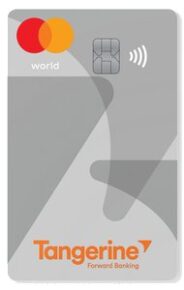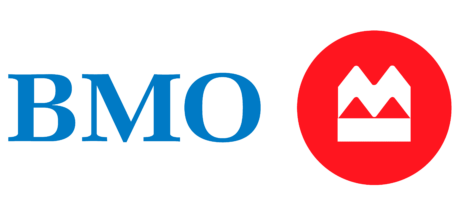The mortgage stress test is a government rule that requires mortgage applicants to show they could afford higher payments if mortgage rates increase in the future.
Lenders perform a stress test as part of the standard mortgage application process, and would-be borrowers are only approved if they can pass the test. To pass the test, you need to show that you could afford a hypothetical monthly payment that may be hundreds of dollars higher than your actual payment.
The mortgage stress test: what it is and why it matters
Many Canadians renew their mortgages several times before paying them off. As a result, there’s always a risk that the best interest rate available when renewing will be higher than the rate they originally had. The mortgage stress is meant to assess a home buyer’s ability to keep making their mortgage payments, even at a higher interest rate.
Nerdy Tip: If you’re renewing a mortgage with your current lender, you won’t need to pass another stress test.
Refinancing a mortgage, taking out a home equity line of credit or switching to a new lender also requires passing a mortgage stress test.
The main takeaway for buyers is that the top of your budget is determined by these higher qualifying rates — not by the best rate a lender offers you. If you’re bumping against the high end of your budget and you haven’t yet factored in the stress test, you likely are already past your limit.
Understand how the stress test works — and what it could cost you
To be approved for the mortgage rate offered by a lender — and the mortgage amount you are seeking — you must actually show that you can afford a more expensive mortgage. .
Specifically, you must show that you could afford a rate equal to the higher of:
- 5.25% or
- the mortgage rate you’ve been offered plus 2%.
For example, say your lender offers you an interest rate of 5%. Your lender would consider your mortgage application as if you were going to pay 7% (your 5% offer + 2%).
So, in this example, you would need to show that you could afford mortgage payments at 7% for the amount you want to borrow.
How lenders determine if you can afford the higher rate
One set of tools lenders use to see whether applicants can afford the mortgage they are seeking are called debt service ratios.
Gross debt service (GDS) ratio: Includes all housing expenses, including mortgage payment, taxes and utilities, and shouldn’t exceed 39% of your income.
Total debt service (TDS) ratio: Includes all debt payments, including mortgages, car payments, student debt, credit card and child support, and shouldn’t exceed 44% of your income.
Although the rates used in the stress test are theoretical, lenders will consider your ability to stay under the debt service ratios as if you’ll be taking out a mortgage with those higher stress-test rates.
Use a stress test calculator to see where you stand
If you’re just beginning the home buying process, you may want to get a sense of what your budget is before you start filling out paperwork. You can use a calculator to see the effect the stress test could have.
- First, consider what rates you could qualify for given your credit score.
- With that rate in hand, use an affordability calculator to start honing in on a general price you’d be comfortable with.
- Use your estimated rate and home price in the stress test calculator above to see how much more per month you’d need to show you could afford. Remember that your mortgage payment could also include taxes, home insurance and mortgage insurance.
What to do if you don’t pass the stress test
If the qualifying rate breaks your budget — even though you may never actually pay a rate that high — you won’t get approved for that particular mortgage. Here are your options:
- Increase your down payment. More money down reduces the mortgage amount and, as a result, your monthly payment. Depending on how much you have saved for a down payment, this may mean delaying your home purchase.
- Reduce your budget. This also would lower your loan amount, and you wouldn’t necessarily need to delay your home search. A lower budget may reduce the number of homes for you to choose from, however.
- Stick with your current lender. While this isn’t an option for first-time home buyers, those who already have a mortgage can avoid the stress test by renewing with their current lender. While shopping around or negotiating at renewal time can save you money if you find a better rate, it could pay to stay where you are if you’d have trouble passing the stress test.4
Avoiding the mortgage stress test
Considering how Canada’s mortgage stress test can limit borrowing, you might be asking yourself, “Is there any way to avoid this thing?”
In most cases, the answer is no. The stress test is a requirement of mortgage lending at most Canadian financial institutions.
Some B lenders and unregulated private lenders are an exception; they won’t necessarily apply the stress test. Credit unions may use the stress test as an evaluation tool, but not as a deciding factor. If you’re making a down payment of at least 20% with some credit unions, you may not be stress tested at all.
Otherwise, expect the stress test to be a significant part of your mortgage and homeownership journey.
Frequently asked questions about Canada’s mortgage stress test
The stress test became mandatory for mortgages offered by federally regulated lenders in 2018. All Canadian home buyers must undergo the mortgage stress test when applying for a loan.
DIVE EVEN DEEPER

Find The Best 5-Year Fixed Mortgage Rates In Canada
Compare customized 5-year fixed mortgage rates from Canada’s best lenders and brokers for free. Find the lowest mortgage rate and apply for the home loan that best fits your needs.

3 Ways to Take on a Budget-Busting Mortgage Renewal
With interest rates still high, renewing your mortgage probably won’t be the best part of your 2024. If you’re worried about the impending cost of your home loan, keep these strategies in mind.

Fixed vs Variable Mortgage Rate: Which Is Better For You?
With a fixed-rate mortgage, your interest rate and payments won’t change during your mortgage term. But they might if you opt for a variable-rate mortgage.









